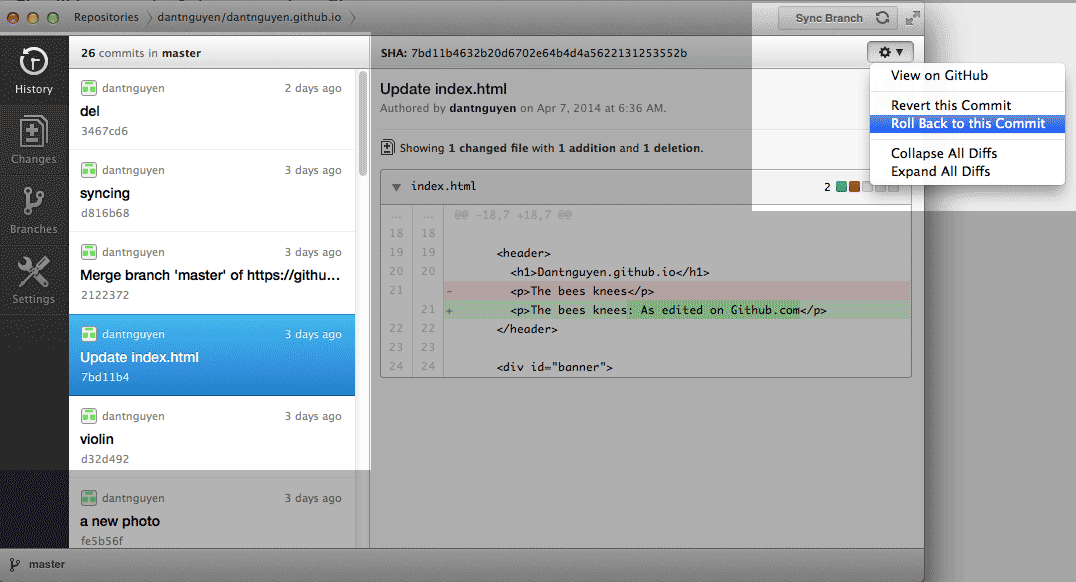

The git checkout command can be used in a commit, or file level scope.
Rollback master git update#
This is an update to the "Commit History" tree. The HEAD ref and main branch ref currently point to commit d. This example demonstrates a sequence of commits on the main branch. To demonstrate this consider the following example. Keep these mechanisms in mind as you read through this article.Ī checkout is an operation that moves the HEAD ref pointer to a specified commit.

We explore the three trees in depth on the git reset page. These components are sometimes known as "The three trees" of Git. It helps to think about each command in terms of their effect on the three state management mechanisms of a Git repository: the working directory, the staged snapshot, and the commit history. Hopefully, you’ll walk away with the confidence to navigate your repository using any of these commands. In this article, we’ll compare the most common configurations of git reset, git checkout, and git revert.

They all let you undo some kind of change in your repository, and the first two commands can be used to manipulate either commits or individual files.īecause they’re so similar, it’s very easy to mix up which command should be used in any given development scenario. The git reset, git checkout, and git revert commands are some of the most useful tools in your Git toolbox.


 0 kommentar(er)
0 kommentar(er)
